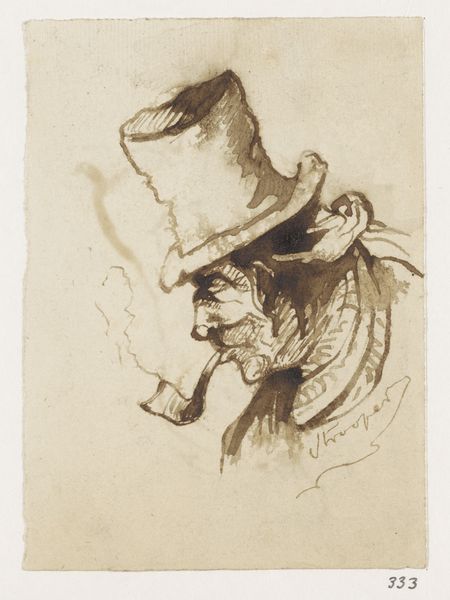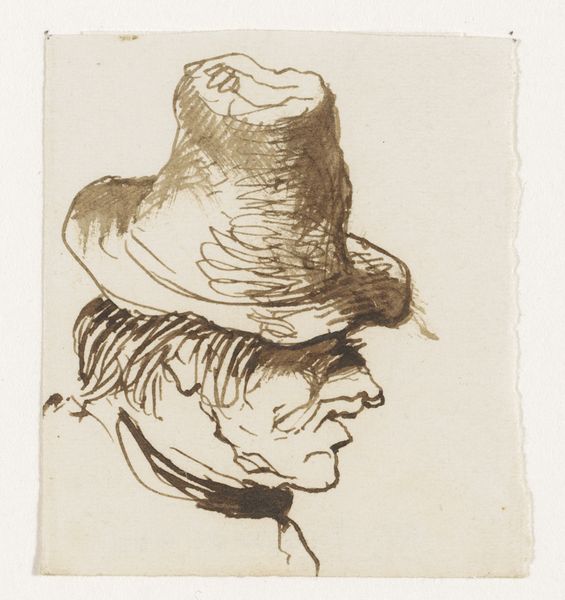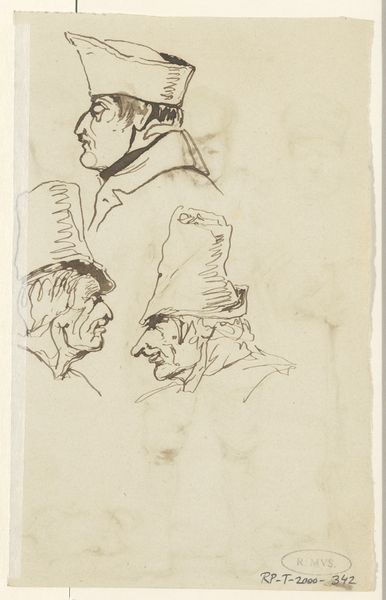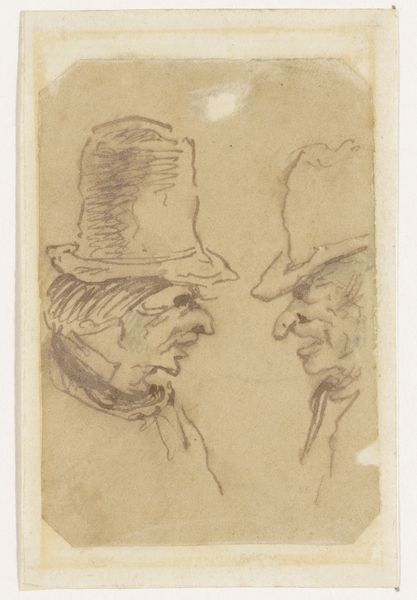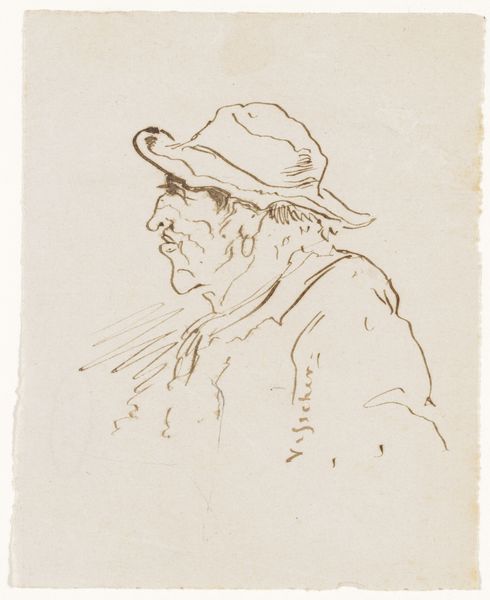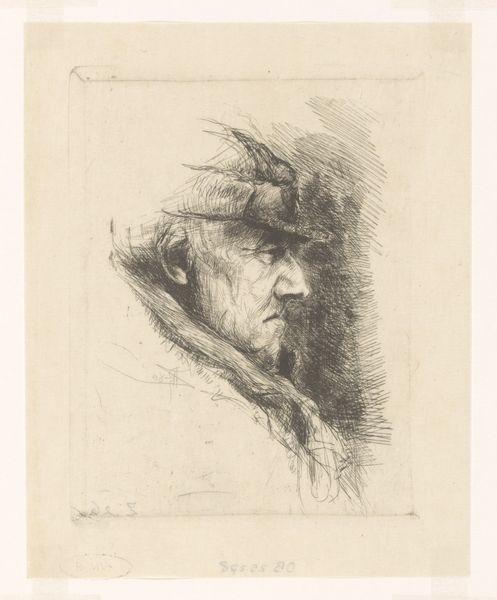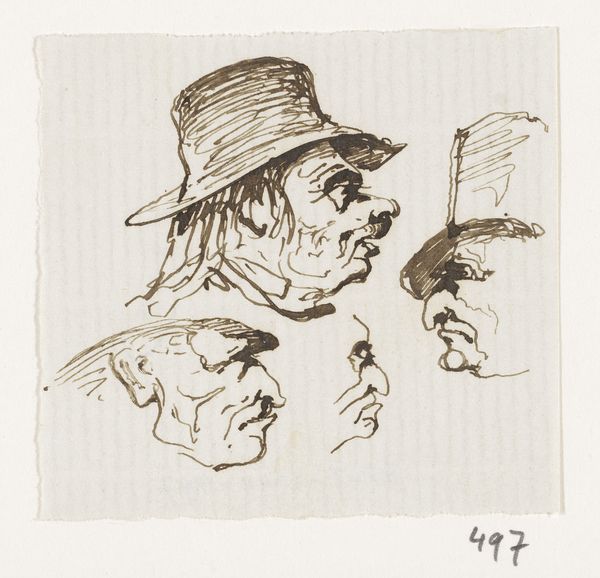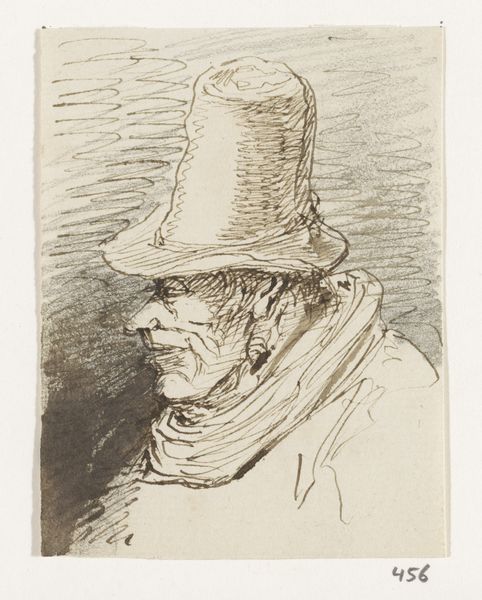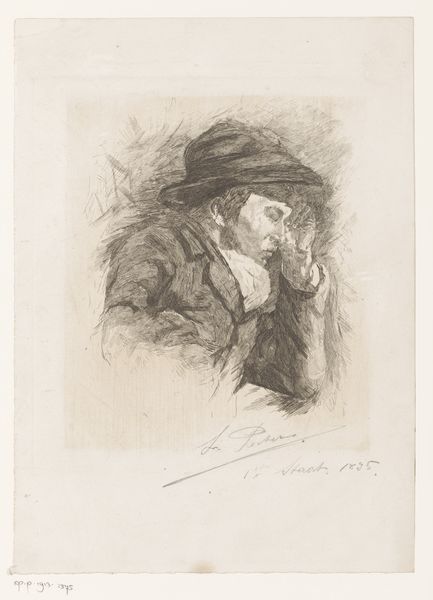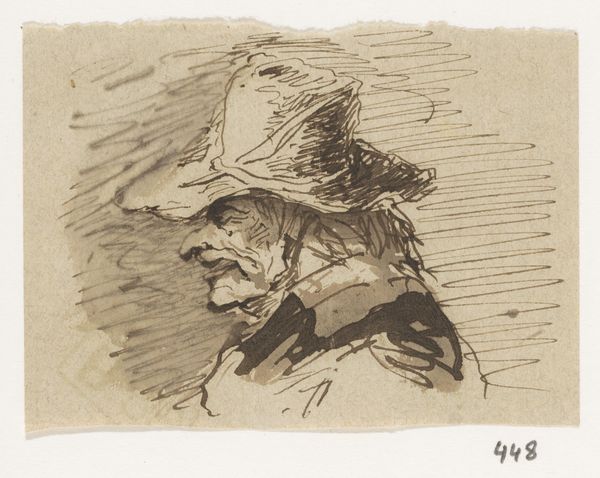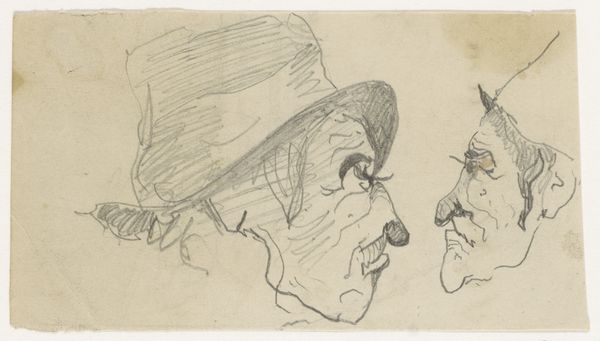
Dimensions: height 122 mm, width 90 mm
Copyright: Rijks Museum: Open Domain
Editor: We're looking at "Strooper" by Johannes Tavenraat, created sometime between 1840 and 1880. It’s an ink and pencil drawing held at the Rijksmuseum. It looks like a quick sketch of a man smoking a pipe. The lines are so expressive, but it also feels unfinished. What do you see in this piece? Curator: I see a layering of archetypes, don't you? The pipe itself is potent, historically signaling contemplation, even wisdom – think of portraits of philosophers. But it was also a common daily item, linking it to working class, everyman narratives. The "Strooper," perhaps his trade? We see a rough, immediate quality which lends an authenticity. Editor: I didn’t even think about the name connecting to a trade! The authenticity you mentioned… is that romanticized? Curator: In a way, yes. Romanticism often idealized the common man, the peasant, as untouched by the corrupting influences of industrial society. Look at the rapid lines—this wasn't about perfect realism; it's capturing an *impression* of this individual. His face in profile, a familiar and timeless posture, evokes something primordial, perhaps? Editor: So, he is using those recognizable symbols, the pipe, the hat, to speak about something bigger, a cultural memory of sorts. Curator: Precisely. Each detail connects to a broader cultural understanding and visual history. How does that inform your understanding now? Editor: It definitely deepens it. I was seeing it as just a simple sketch, but now I see how Tavenraat is actively using visual shorthands to evoke ideas about class and a perhaps a simpler, pre-industrial life. Curator: Wonderful! These sketches speak to the artist’s desire to engage with those lasting cultural concepts, communicated through enduring symbols.
Comments
No comments
Be the first to comment and join the conversation on the ultimate creative platform.
